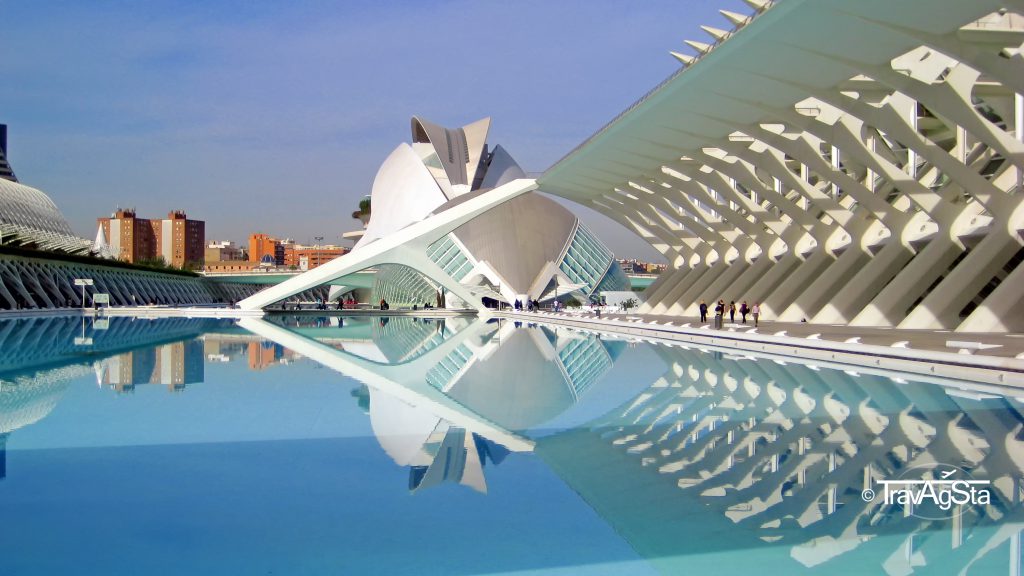Obviously Paella tastes fantastic and thinking about it makes my mouth water. This meal alone is actually reason enough for a city trip to Valencia. Valencia is Spain’s third largest city and capital of the Communitat Valenciana.
We made a day trip here from Alicante and I can only say, it was really exhausting and you should definitely spend more time here.
Nevertheless we could enjoy our stay thanks to waking up early. In the following you can read what you can see in one day. We arrived around ten in the morning and took the train back to Alicante around 5 pm. To survive, we recommend you to make a few breaks. Even end of November it was almost 30° C hot.
Generally, we think Valencia is somehow underrated. At least seen internationally. Though the city is so beautiful and has so much to offer.
Estación del Norte
Arriving at the northern train station, we were already excited. I’ve never seen such a beautiful train station in Germany. Especially the facade is feast for the eye. Generally, train stations in Germany aren’t really beautiful. Well, that’s different in Valencia.
The train station was built in Art Nouveau style and most sights are located not far from here. Everything can be done by foot.
Plaza del Ayuntamiento
This is the twon hall square. It’s really impressive as everything here is cultivated so pretty.
The former postal office is also located here.
Plaza de la Reina
At this place, you can see the Cathedral of Valencia.
La Lonja de la Seda
The city prospers economically and this for a very long time. La Lonja de la Seda is the name of the Silk Exchange and is one of the main attractions of the city. It’s a gothic building from the 15th century.
Plaza de Toros
This is a bullring, which looks a bit like the Colosseum in Rome. Some people don’t want to visit it for ethical reasons. But it’s really impressive. It’s made for 12 000 viewers. For time reasons, we couldn’t watch one of the shows.
Jardin del Turía
Valencia has also a green side. For example the Jardin del Turía – a very beautiful Park in direction of the Ciutat de les Arts i de les Ciences.
The park is situated at the former river bed of the Rio Turía.
Ciutat de les Arts i de les Ciències
You can already see its silhouette from the Jardin del Turía. The Ciutat de les Arts i de les Ciències is a building and park complex and the modern landmark of the city. Just like the Jardin del Turía it lies at the river bed of the dried up Rio Turía and was opened in 1998.
The complex consists of the following complexes:
Museu de les Ciències Prìncipe Felipe: This is an interactive science museum.
L’Hemisfèric: A planetarium with a cinema. Its design is supposed to look like the human eye. They show mostly scientific movies here.
Palau de les Arts Reina Sofía: This is the largest opera in Europe.
L’Oceanogràfic: A oceanarium. It’s Europe’s largest aquarium complex in Europe. On 110.000 square meters, you’ll see over 500 different animals. This alone may take your whole day if you want to.
L’Umbracle: This is a oversized entry to the City of Arts and Sciences. Over 50 different plants are domiciled here, mostly from Valencia’s surrounding, some from tropical places.
Furthermore there are huge and small palm trees and bitter orange trees.
L’Agora: A venue for concerts and just generally big events.
Pont de l’Assut de l’Or: A guyed bridge. Its stands are 125m high and therefore it’s the city’s highest point.
All buildings are surrounded by reflective water pools.
To be clear: Of course, we couldn’t see all those buildings in two or three hours. Each building costs entry fees and you could spend easily a whole day just in the City of Arts and Sciences.
You should plan around three days for Valencia. This way, you will also have enough time for a good meal at the harbour, which is famous for good Valencian cuisine.
We will definitely return one day. Even if it’s just for a Paella. Yes, there was still time left for that!
